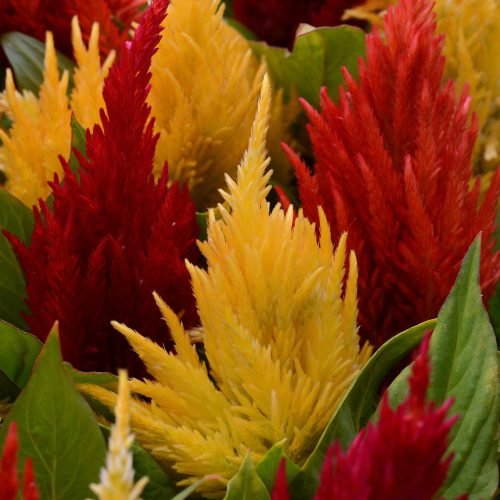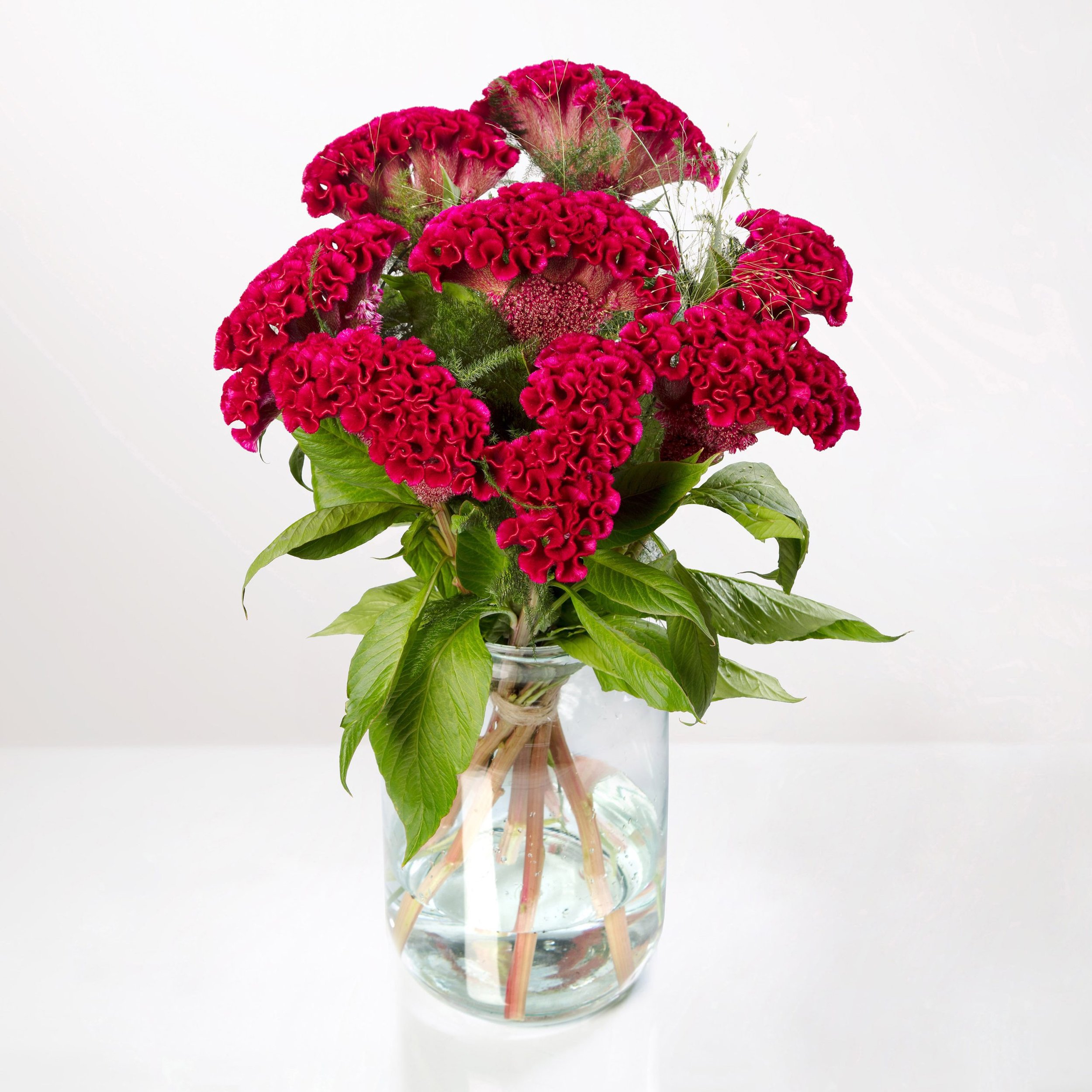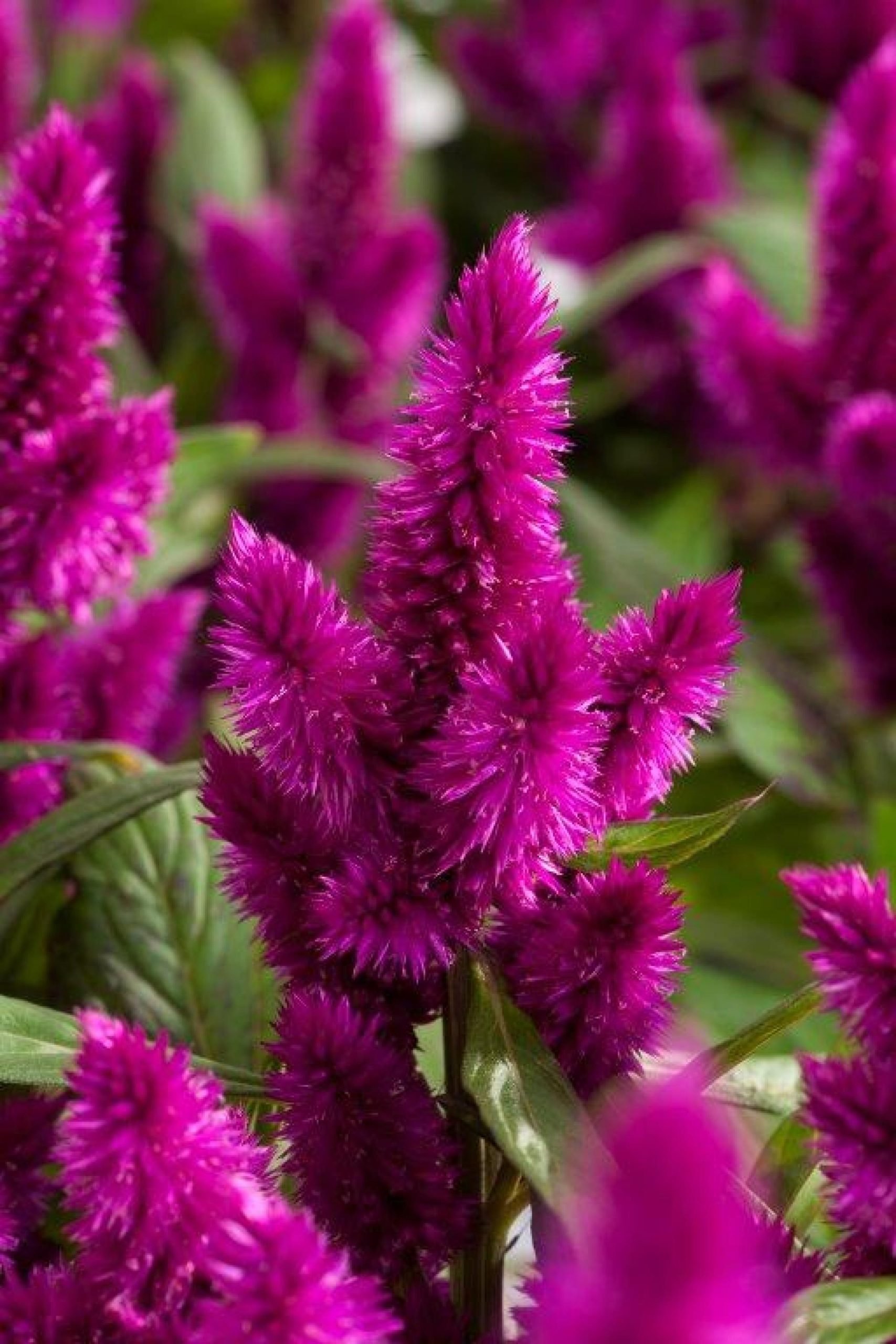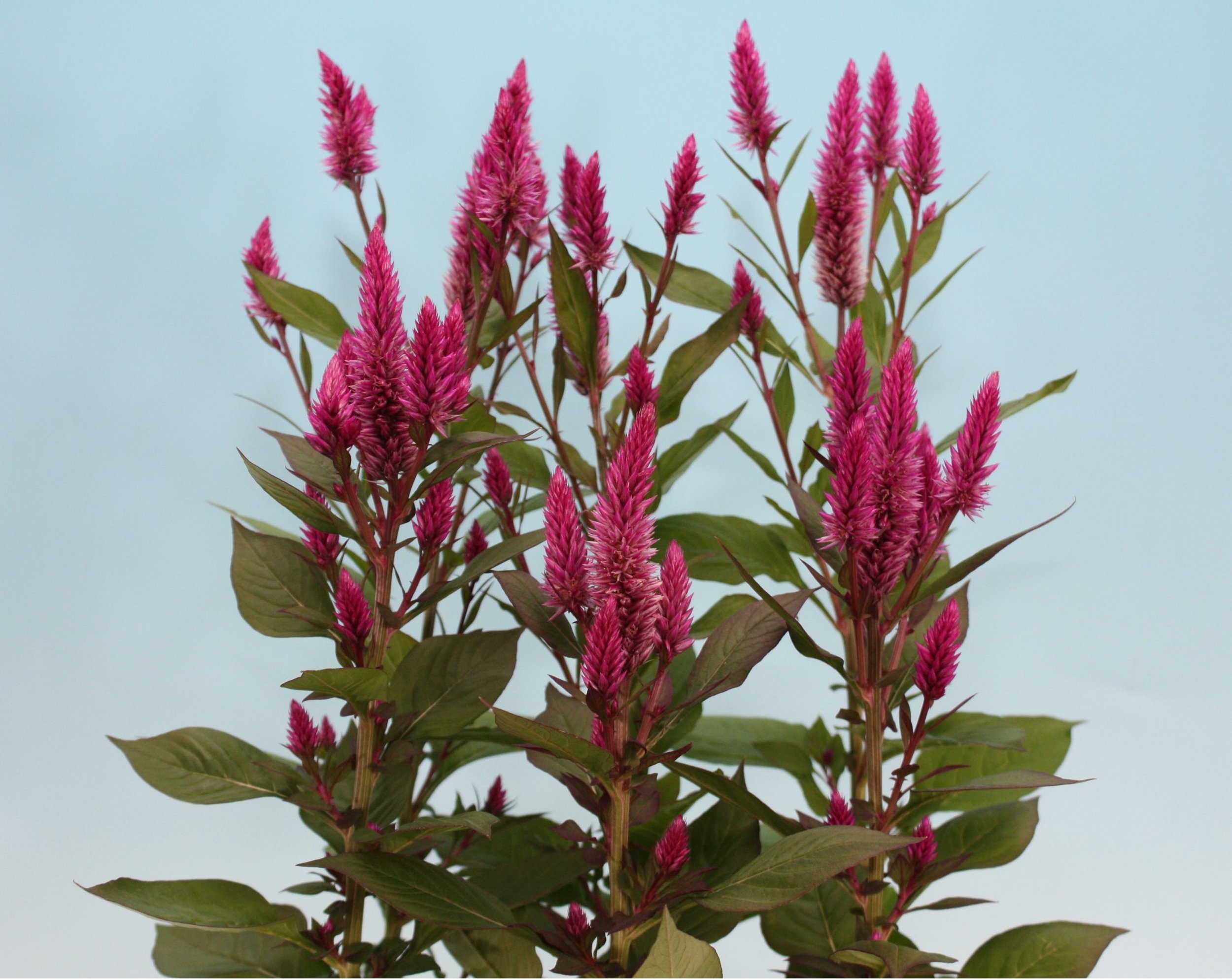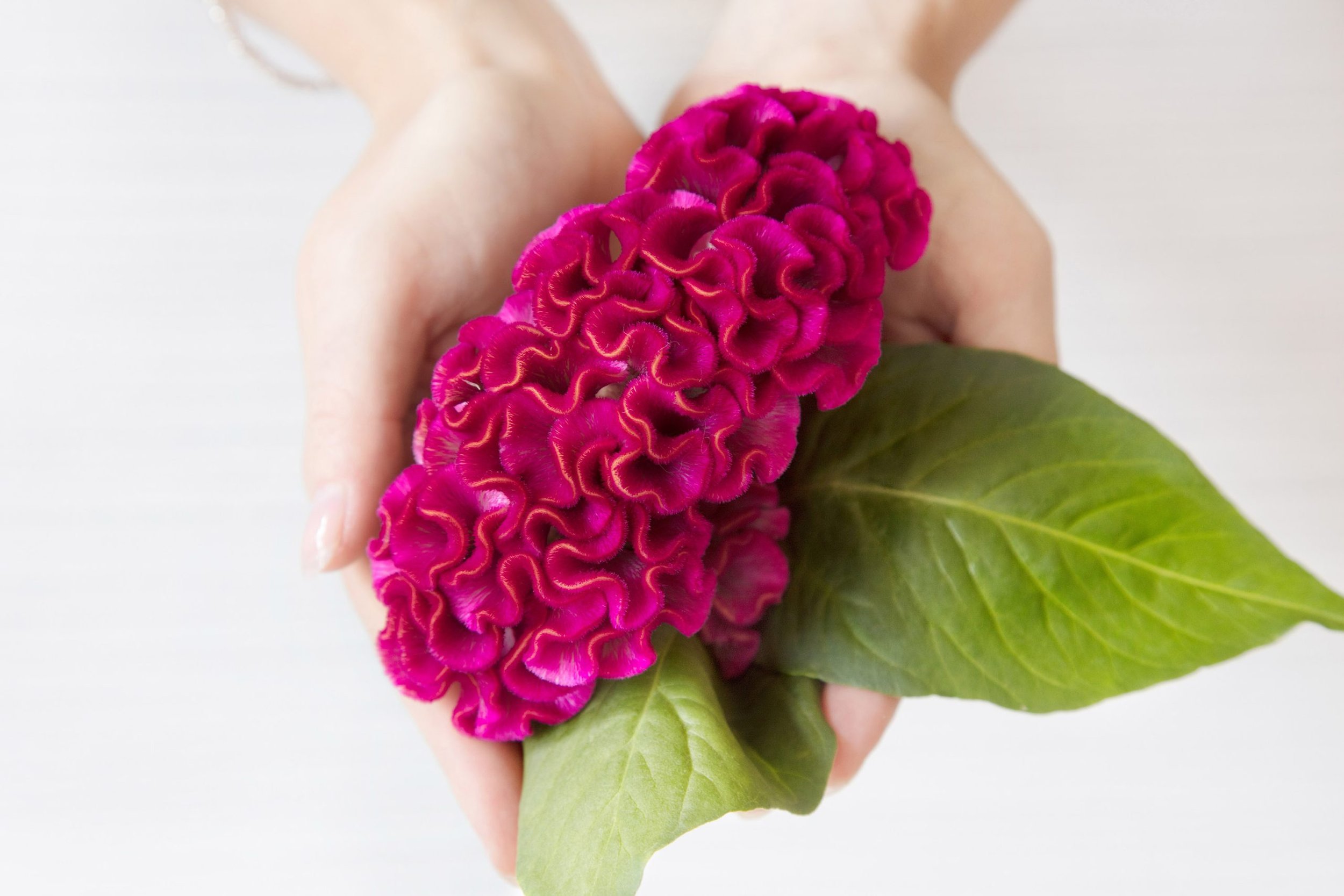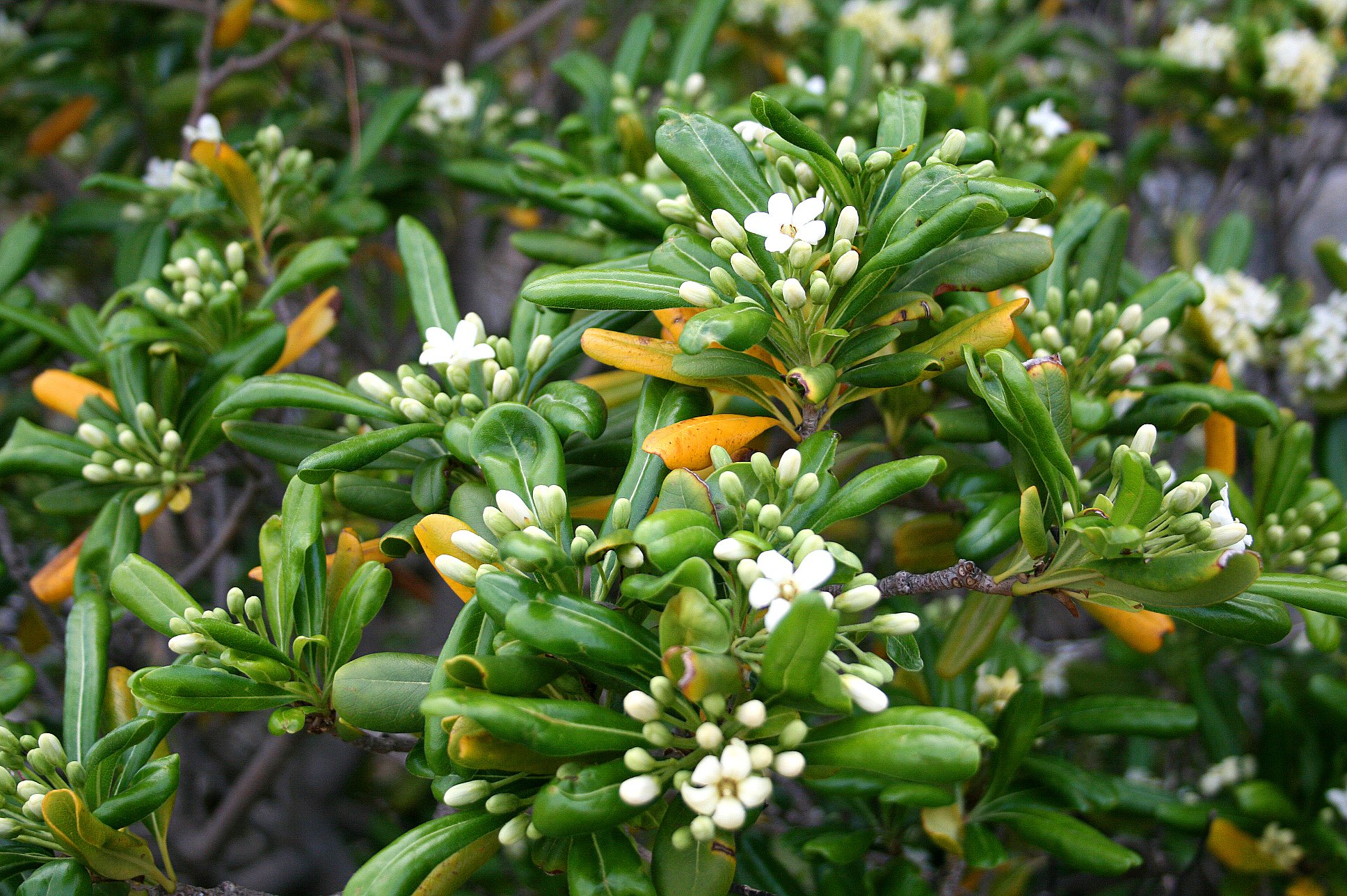If you have never started annual flowers from seed, let this be the year you begin. One of the most rewarding (easy to germinate, long blooming, humidity tolerant) is Celosia, the National Garden Bureau’s 2023 Annual of the Year. Commonly called Coxcomb, this colorful, low maintenance plant should be in every garden.
Celosia argentea (pronounced sell-OH-see-ah ar-jen-TEE-ah) blooms are grouped into three main classes. Plumosa or plume-type have flowers that look like fluffy paintbrushes. Spicata or spike-type have narrow blooms that look like spikes of wheat. Cristata or crested-type have convoluted flowers that make me think of brains or coral. All three grow in full sun or mostly sun and neutral soil, zones 2-11. They prefer moist, well-drained soil but will survive in less favorable soil if given fertilizer and water. Extended dryness will cause the leaves to wilt, detracting from the beautiful flowers that come in yellow, red, rose, pink, orange, and magenta. These are long-lasting in arrangements, and will hold their color well if dried.
Seeds are available for each of the three bloom types. Celosia seeds are small – one gram measure will contain about a thousand seeds. Start with pre-moistened seed starting mix. Tweezers are helpful in placing seeds in the center of starter cells. Cover seeds with a quarter-inch of vermiculite and maintain a temperature of 70-75 degrees. Keep the starter mix barely moist (not wet) to reduce damping off disease. Bottom water to avoid dislodging seeds. You should see signs of germination in 10 days.
Deadheading will cause the plants to produce more flower heads, but I always leave a few spent flowers to encourage self-seeding. Celosia argentea var. spicata may reseed a little too enthusiastically for some gardeners. Plants reach to 24-inches with a 12-inch spread in good soil. Taller plants may need to be staked. Skip the staking by purchasing some of the newer, dwarf cultivars, available as plants.
Celosia is a good choice for pollinator gardens and cutting gardens. It is not a space hog, and will work well in small beds. Plants look especially good when planted in masses. Dwarf types can also be grown in containers.
The accompanying photos are courtesy of the National Garden Bureau. #NGB #YearoftheCelosia
